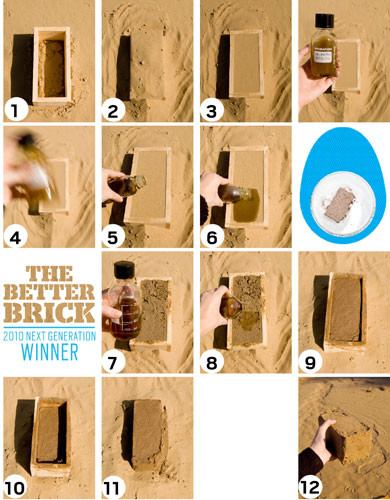Stone Spray Project from Stone Spray on Vimeo.
The Stone Spray Project is a revolutionary robotic construction method which uses soil as the base material and a liquid binder to solidify the soil granules. And uses a jet spray system to deposit the mix of soil and binder, for constructing architectural shapes.

Stone Spray is a project by architects Petr Novikov, Inder Shergill and Anna Kulik. The project is done in the Institute for Advanced Architecture of Catalonia and supervised by Marta Male-Alemany, Jordi Portell and Miquel Lloveras. With professional advisors: Santigo Martin from Vortica and Guillem Camprodon from Fab Lab Bcn.

